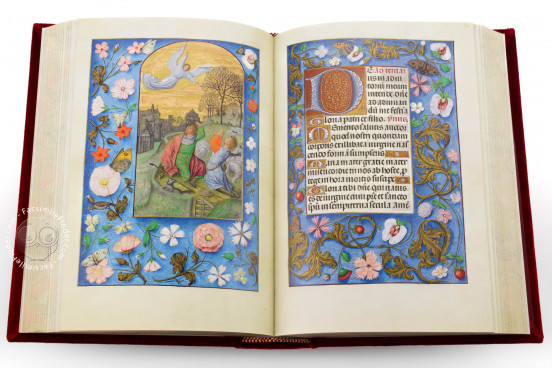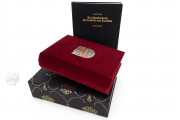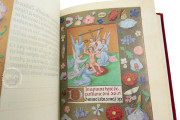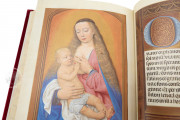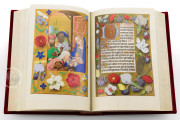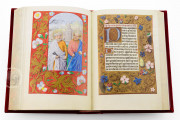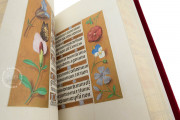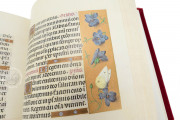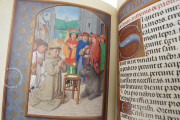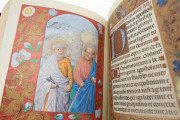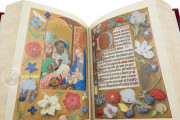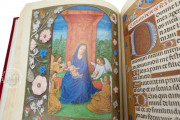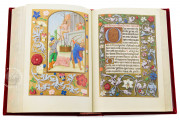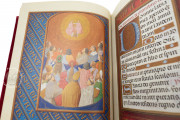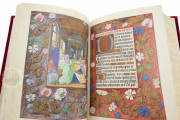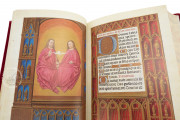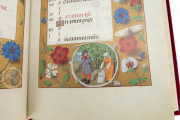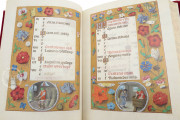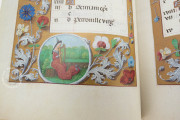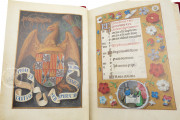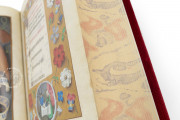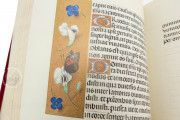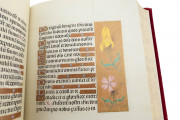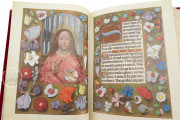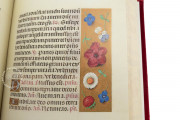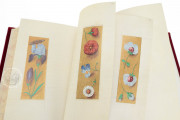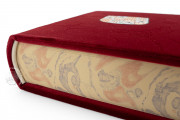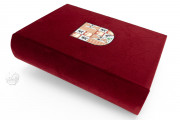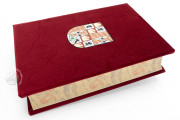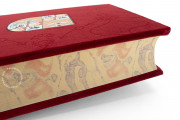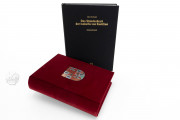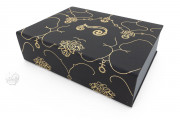The Hours of Isabella the Catholic is one of the most elegant and exquisite Renaissance manuscripts from Belgium. The codex, also known as Libro de Horas de la Reina Isabel la Católica, was written and illuminated in the early 16th century in the Flemish area between Ghent and Bruges and features 40 exquisitely illuminated full-page miniatures, 10 half-page elegantly made pictures, and 24 calendar medallions.
Written in Latin, the Book of Hours of Isabella the Catholic, as the name suggests was commissioned for Isabella the Catholic, queen of Spain, who was a great amateur of Flemish art.
Important Recipient, Important Artists
The importance of the recipient of the manuscript reflects in the artistic collaboration between some of the greatest artists of the time, namely Alexander (Sanders) Bening (to whom are attributed at least half of the miniatures), the Master of the First Prayer Book of Maximilian; Gerard David; the Master of James IV of Scotland; and the Master of the Prayer Books of around 1500.
Flemish Art: Third Dimension and Trompe-l'oeil Technique
The iconographic and decorative apparatus is certainly representative of the Flemish style which included the development of the third dimension through the application of abutting lines framing both the miniatures and the border decorations.
The Hours of Isabella the Catholic exhibits two types of bordering frames: the bar border running vertically alongside the text and the full border decorations painted on all four sides of the page. An interesting decoration is the pilgrim badge on f. 184r; initially a souvenir that pilgrims would buy at Christian sites of pilgrimage, it became an ornament to decorate manuscripts.
The full border decoration is certainly very elaborated as it features flowers strewn on the vividly colored background, varying from green (ff. 4v-5r) to red (f. 32r). The decorative apparatus, which includes insects, birds, and curling acanthus leaves, is represented with the use of the trompe-l'oeil technique.
Signs of Ownership
The ownership of the manuscript seems confirmed in the miniature on the first leaf which depicts the queen’s escutcheon together with her and Ferdinand’s emblem and their motto. It is, however, still unclear as to why and by whom it was commissioned; the most popular suggestions have identified the codex as a wedding present or as a consolation gift following the death of her son, however, we may only speculate.
Gothic Textura
The Hours of Isabella the Catholic exhibits an elegant example of Gothic script, namely Gothica Textura featuring abbreviations, bitings, and the two forms of r and s.
Binding description
Unfortunately, like many medieval manuscripts, the Book of Hours of Isabella the Catholic lost its original binding which was replaced in the 19th century with a brown goatskin binding with the name of the bookbinder (Trautz-Bauzonnet) stamped on the front cover.
We have 1 facsimile edition of the manuscript "Hours of Isabella the Catholic": Das Stundenbuch der Isabella von Kastilien aus Cleveland facsimile edition, published by Faksimile Verlag, 2013
Request Info / Price
